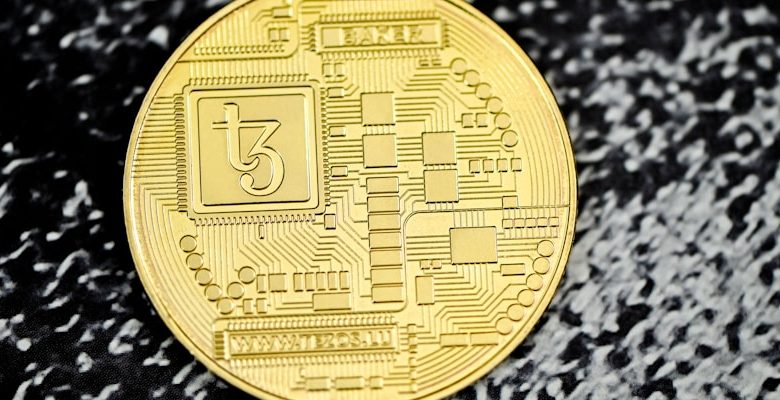How Blockchain Is Enhancing Cybersecurity Measures

- Understanding the basics of blockchain technology
- The role of blockchain in securing digital transactions
- Exploring the potential of blockchain in preventing data breaches
- Case studies of successful blockchain implementations in cybersecurity
- Challenges and limitations of integrating blockchain with cybersecurity measures
- Future trends in blockchain technology for enhancing cybersecurity
Understanding the basics of blockchain technology
The blockchain technology is a distributed ledger that securely records transactions across a network of computers. Each block in the chain contains a number of transactions, and every time a new transaction occurs on the blockchain, a record of that transaction is added to every participant’s ledger. This decentralized nature of blockchain makes it extremely difficult for hackers to manipulate the data, as they would need to control more than 50% of the network to do so.
Blockchain technology uses cryptographic algorithms to secure the data stored in each block. This means that each block is linked to the previous block using a unique hash code, creating a chain of blocks that cannot be tampered with without invalidating the entire chain. This ensures the integrity and security of the data stored on the blockchain, making it an ideal solution for enhancing cybersecurity measures.
One of the key features of blockchain technology is its transparency. All transactions on the blockchain are visible to every participant in the network, which helps to increase trust and accountability. This transparency also makes it easier to detect any unauthorized changes to the data, as any discrepancies will be immediately apparent to all participants.
In addition to its transparency, blockchain technology also offers immutability. Once a block is added to the chain, it cannot be altered or deleted without the consensus of the majority of participants in the network. This makes blockchain an ideal solution for storing sensitive information, as it ensures that the data remains secure and tamper-proof.
Overall, blockchain technology is revolutionizing the way cybersecurity measures are implemented. Its decentralized nature, cryptographic security, transparency, and immutability make it an ideal solution for protecting data from cyber threats. By leveraging the power of blockchain, organizations can enhance their cybersecurity measures and ensure the integrity and security of their data.
The role of blockchain in securing digital transactions
Blockchain technology plays a crucial role in enhancing cybersecurity measures by providing a secure and decentralized platform for digital transactions. One of the key features of blockchain is its ability to create a tamper-proof and transparent ledger of transactions. This ledger, or blockchain, is distributed across a network of computers, making it extremely difficult for any single entity to manipulate or alter the data stored within it.
By leveraging cryptographic techniques, blockchain ensures that each transaction is securely recorded and verified by multiple participants in the network. This process not only enhances the security of digital transactions but also eliminates the need for a central authority to oversee and validate each transaction. As a result, blockchain technology reduces the risk of fraud and unauthorized access to sensitive data.
Moreover, blockchain technology uses consensus mechanisms such as Proof of Work or Proof of Stake to validate transactions and add them to the blockchain. This consensus mechanism ensures that only valid transactions are approved, further enhancing the security of the network. Additionally, the decentralized nature of blockchain means that there is no single point of failure, making it more resilient to cyber attacks.
Overall, the role of blockchain in securing digital transactions cannot be understated. By providing a secure and transparent platform for conducting transactions, blockchain technology is revolutionizing the way we approach cybersecurity in the digital age. Its decentralized nature, cryptographic techniques, and consensus mechanisms work together to create a robust and secure environment for conducting online transactions.
Exploring the potential of blockchain in preventing data breaches
One of the most promising applications of blockchain technology is in enhancing cybersecurity measures to prevent data breaches. By utilizing blockchain, organizations can create a secure and transparent system for storing and managing data, making it more challenging for hackers to gain unauthorized access. This distributed ledger technology allows for the creation of a tamper-proof record of transactions, ensuring the integrity and confidentiality of sensitive information.
Blockchain can help prevent data breaches by providing a decentralized network where data is stored across multiple nodes, making it nearly impossible for a single point of failure to compromise the entire system. Additionally, blockchain technology uses advanced cryptographic techniques to secure data, making it extremely difficult for cybercriminals to intercept or manipulate information.
Furthermore, blockchain can enhance cybersecurity measures by enabling the implementation of smart contracts, which are self-executing contracts with the terms of the agreement directly written into code. These smart contracts can automate security protocols and ensure that data is only accessed by authorized parties, reducing the risk of data breaches caused by human error or malicious intent.
Case studies of successful blockchain implementations in cybersecurity
Several successful implementations of blockchain technology in cybersecurity have been observed in recent years. These case studies highlight the potential of blockchain to enhance cybersecurity measures and protect sensitive data from cyber threats.
- One notable example is the use of blockchain in securing digital identities. By storing identity information on a decentralized blockchain network, individuals can have more control over who has access to their personal data.
- Another case study involves the use of blockchain in securing Internet of Things (IoT) devices. By leveraging blockchain’s tamper-evident properties, IoT devices can communicate securely and prevent unauthorized access.
- Blockchain has also been used to improve data integrity and transparency in supply chain management. By recording transactions on a blockchain ledger, companies can ensure the authenticity of their products and track them throughout the supply chain.
- Furthermore, blockchain technology has been utilized in securing financial transactions and preventing fraud. By using smart contracts and cryptographic techniques, blockchain can provide a secure and transparent way to transfer funds.
Overall, these case studies demonstrate the diverse applications of blockchain technology in enhancing cybersecurity measures. By leveraging the decentralized and immutable nature of blockchain, organizations can strengthen their security posture and protect against evolving cyber threats.
Challenges and limitations of integrating blockchain with cybersecurity measures
Integrating blockchain technology with cybersecurity measures comes with its fair share of challenges and limitations that organizations need to consider.
One challenge is the complexity of implementing blockchain systems, which require specialized knowledge and expertise. This can be a barrier for organizations with limited resources or technical capabilities.
Another limitation is the scalability of blockchain networks, as the technology can struggle to handle large volumes of transactions quickly and efficiently. This could potentially impact the speed and performance of cybersecurity measures.
Moreover, the immutability of blockchain data, which is a key feature for security, can also pose challenges. Once data is recorded on the blockchain, it cannot be altered or deleted, making it difficult to rectify any errors or fraudulent activities.
Additionally, the cost associated with implementing and maintaining blockchain systems can be prohibitive for some organizations, especially smaller businesses with budget constraints.
Future trends in blockchain technology for enhancing cybersecurity
One of the future trends in blockchain technology for enhancing cybersecurity is the integration of artificial intelligence (AI) algorithms. By incorporating AI into blockchain systems, organizations can improve threat detection and response capabilities. AI can analyze vast amounts of data in real-time to identify potential security breaches and take proactive measures to mitigate risks. This combination of blockchain and AI can significantly enhance cybersecurity measures by providing a more robust defense against cyber threats.
Another emerging trend is the use of quantum-resistant cryptography in blockchain networks. As quantum computers become more powerful, traditional cryptographic algorithms may become vulnerable to attacks. To address this issue, researchers are developing quantum-resistant cryptographic techniques that can withstand quantum computing threats. By implementing these advanced cryptographic methods in blockchain technology, organizations can future-proof their cybersecurity defenses and ensure the security of their digital assets.
Additionally, the adoption of multi-factor authentication (MFA) in blockchain systems is gaining traction as a way to enhance cybersecurity. MFA adds an extra layer of security by requiring users to provide multiple forms of verification before accessing sensitive data or conducting transactions. This can help prevent unauthorized access to blockchain networks and reduce the risk of identity theft or data breaches. By implementing MFA protocols, organizations can strengthen their cybersecurity posture and better protect their assets from cyber threats.
In conclusion, the future of blockchain technology for enhancing cybersecurity looks promising with the integration of AI algorithms, quantum-resistant cryptography, and MFA protocols. These advancements can help organizations stay ahead of cyber threats and protect their digital assets more effectively. By leveraging these innovative technologies, businesses can strengthen their cybersecurity defenses and build a more secure and resilient blockchain ecosystem.



